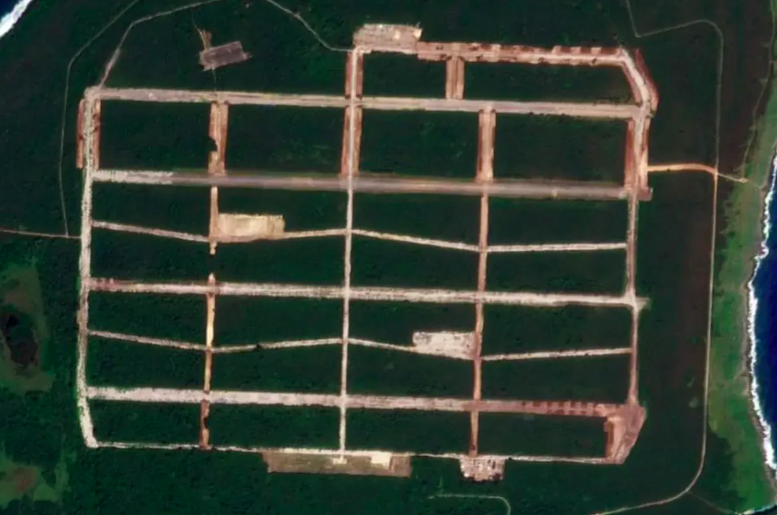US revives WWII-era Pacific air base for a China showdown
This article by Gabriel Honrada and published by Asia Times, heavily quotes CSP Senior Fellow Grant Newsham.

The US military’s rapid restoration of Tinian North Field, a former World War II B-29 bomber base abandoned since 1947, signals a significant shift in its Pacific defense strategy vis-à-vis China.
Recent satellite imagery confirms the extensive restoration of North Field on Tinian Island, located 193 kilometers northeast of Guam, The War Zone reported. Over 20 million square feet of runway and infrastructure have been rehabilitated at the airfield between December 2023 and January 2025, the report said.
The US Air Force and Navy have spearheaded the project, integrating the site into the US Agile Combat Employment (ACE) strategy emphasizing dispersed, flexible basing to counter China’s missile threats. Tinian North Field’s grid-like design complicates enemy targeting, requiring significant resources to neutralize.
Concurrent expansion work at Tinian International Airport includes a sizeable new apron and fuel storage facilities to bolster operational capabilities. The overhaul aligns with America’s broader Indo-Pacific strategy of supplementing Andersen Air Force Base on Guam and other Pacific airfields.
While US officials prioritize active air defenses over hardening infrastructure, China’s growing missile threat underscores the urgency of flexible basing. The restoration also accommodates short-take-off aircraft like the F-35B, reinforcing US power projection in the region.
The US has undertaken similar restoration work at Peleliu, an island of Palau, and plans to do the same for Yap, an island of Micronesia. Once completed, the military infrastructure on Peleliu and Yap will complement those on Tinian and Guam to increase survivability against a Chinese attack and reinforce America’s position in the Second Island Chain.
Why is the US strengthening its presence in the Pacific’s Second Island Chain 80 years after World War II? Grant Georgulis argues in a 2022 article for the Journal of Indo-Pacific Affairs that the First Island Chain, spanning Japan, Taiwan and the Philippines, is not a survivable nor safe location for operations because it is within reach of China’s long-range bombers, cruise missiles and ballistic missiles.
Georgulis suggests that the US focus on the Second Island Chain, including Midway, the Marianas, Palau and the Marshall Islands, to enhance Guam’s defenses.
However, China has its own island-hopping strategy in the Pacific. In an August 2023 article for the Foreign Policy Research Institute (FPRI), Andrew Weaver mentions that China has been using coercive economic policies and elite capture to co-opt island nations to serve its Pacific defense policies, which aim to expel the US from its maritime periphery.
For instance, Grant Newsham mentions that a Chinese-linked casino secured permission to operate on Tinian Harbor, through which US military supplies and materials move. Newsham notes that the casino provides an excellent view of its maritime approach, making it an ideal operations center for Chinese intelligence services.
Newsham also points out that US efforts to establish a training base on Saipan a decade ago were hamstrung by a now-defunct Chinese casino, with money spent lavishly in government circles and among “environmental groups.”
He also mentions that China is building an airfield at Yap for “tourism” purposes and has invested in strategically located land at Angaur in Palau, where the US plans to place an over-the-horizon missile defense radar. Newsham also says China is angling to refurbish the defunct US airfield at Kanton in Kiribati for “tourism” purposes.
Newsham also mentions that East Timor could offer an unfinished US 10,000-foot runway as a “gift” to China in exchange for economic assistance and that plans are in place for China to extend Henderson Field in the Solomon Islands. Should China establish a strong foothold in the Pacific, the US and its Pacific partners may eventually have to withdraw to the Third Island Chain.
In a December 2024 Proceedings article, Frederick Cichon argues that the US situation in the Pacific is akin to how it was in 1941. Cichon notes that the US defeat in the Philippines allowed Japan to establish island bases throughout the Southwest and South Pacific, forcing the US to operate as far away as Hawaii.
He points out that the US had to fight unplanned battles in the Solomon Islands and Papua New Guinea, with Japan only being stopped at the Battle of Midway and the Coral Sea.
He emphasizes that bases in the Third Island Chain, such as those in Hawaii, American Samoa and New Zealand, provided critical support and were less vulnerable than US bases in the First and Second Island Chains.
- China, Look at the Numbers: Japan Threatens Nobody - December 8, 2025
- Newsham Breaks Down Latest China–Japan Standoff Near Senkakus Islands - December 4, 2025
- China’s Act of War Against PM Takaichi and Japan - November 24, 2025
